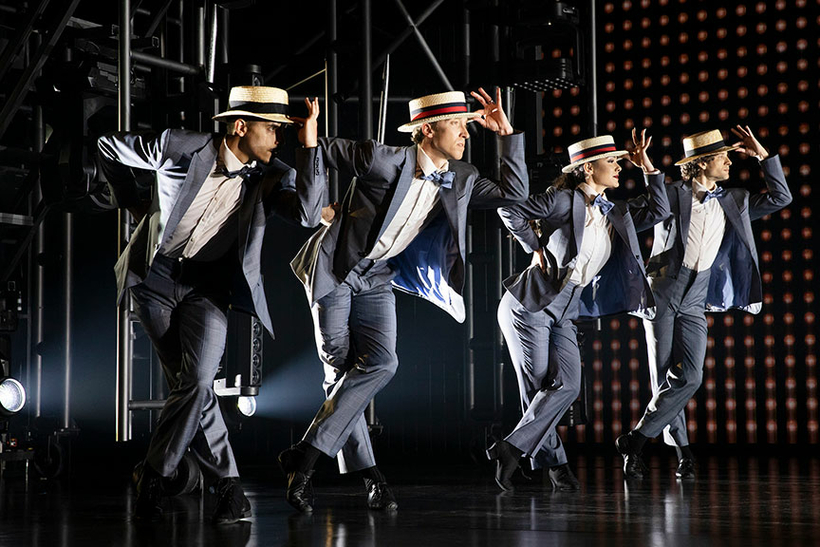If you ask your average New Yorker who Bob Fosse was, they’ll flash on Chicago, still flourishing on Broadway after 48 years. (It’s the longest-running Broadway revival ever.) And they’ll probably conjure up dancers in black, twitching their torsos and slamming bowler hats down over their eyes.

But that’s not all there was to Bob Fosse, as we are about to learn, big-time, with the first Broadway revival of another Fosse show—the all-dancing Dancin’, of 1978—which opens on March 2 at the Music Box Theatre. The Tony-winning revue has been restored and recalibrated by a dedicated group of former Fosse dancers bent on showing the world who their guru really was.
Yes, he directed the film Cabaret. Yes, he won an Oscar, Emmy, and Tony all in the same year (1973), still the only person to have done so. But essentially he was a master choreographer. From his lowly start as a small-time Chicago vaudevillian who also did shows in burlesque houses, Fosse rose to be one of the style innovators of the 20th century, the inventor of a whole new dance language. What he did was force-compress the razzmatazz energy of his rinky-dink roots until it seemed about to burst. And then he let it burst.

Sure, Fosse dancing can seem at times like articulated narcissism—as if he were the Beatnik of choreographers. And yet, from the mid-1950s to the mid-1980s, in a parade of hit shows and movies, Fosse animated that particular language in a dizzying number of ways. On YouTube can be found unforgettable Fosse solos, duos, trios, as well as plenty of frugging crowds designed to work like crazy machines. (See: The Pajama Game, Damn Yankees, How to Succeed in Business Without Really Trying, Sweet Charity, Pippin, Chicago.)
Not only that. Along the way Fosse roped in dancers as if into a religion. Veteran Fosse-ites, especially the team that’s reviving the new Dancin’—headed by Wayne Cilento—seem to have their own Fosse-speak, which can sound at times like a brand of metaphysics. They talk about the extreme precision of the language—the torso thrusts, the jazz hands, the hats—that paradoxically freed them up to find themselves. They describe facing out toward the audience, yet going way inside “to a whole other place” to give a top performance. “It wasn’t ‘Look at me,’” said one of them in a recent podcast, “it was internal.”

Go to see the new, updated, re-costumed, reimagined Dancin’ for the almost 40 numbers showing all the ways Fosse deployed syncopation, volume, surprise, precision, ecstasy. Or go for the new generation of Fosse dancers who come from wildly different backgrounds, races, and trainings. With all the soul-searching and identity-questioning of our time, dancers in general have been forced to go deeper, get truer, be more daring. The handpicked 22 in Dancin’ will reveal themselves to their audience thrillingly, each in their own way. —Elizabeth Kendall
Dancin’ will be on at the Music Box Theatre, in New York City, beginning March 2
Elizabeth Kendall is a New York–based dance critic and historian, and a professor at the Eugene Lang College of Liberal Arts at the New School


 Discover
Discover